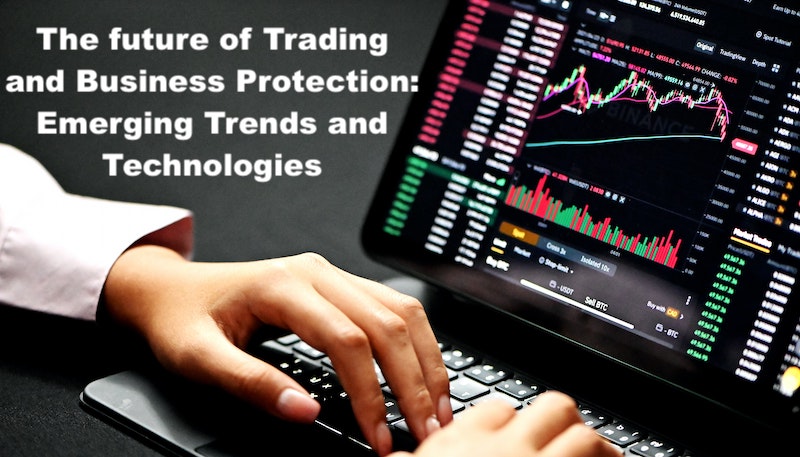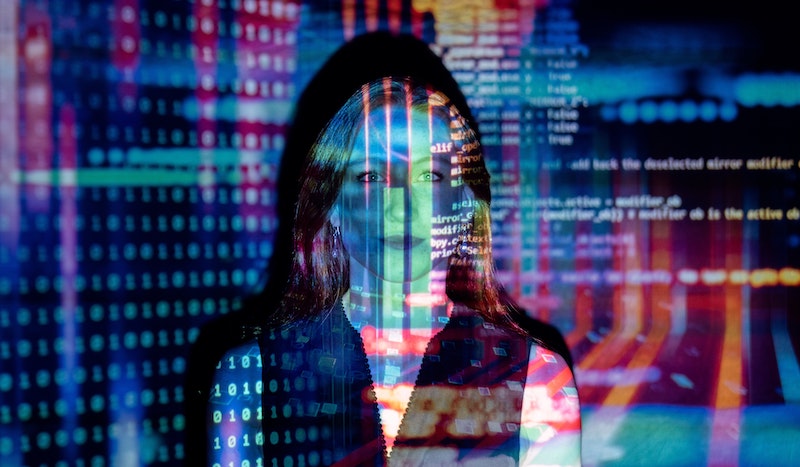
As technology continues to improve every aspect of life, trading, and business protection are not left behind. Traders and organizations need to leverage these emerging trends and technologies to improve their business.
Organizations are constantly exposed to the threat of cyber attacks. A study by Checkpoint showed a 38% increase in global cyberattacks in 2022 compared to 2021. However, new technologies are now available to protect businesses from cybercriminals and other bad actors.
Blockchain, Artificial intelligence, and quantum computing are some of the emerging trends presently redefining the world of electronic trading. This article will discuss the current trends shaping the future of trading and business protection.
Trading Trends and Technologies
Electronic trading has redefined the financial markets, providing traders access to real-time data. This has facilitated faster and more efficient trades. Some of these trends are discussed below.
Artificial Intelligence & Machine Learning

Artificial intelligence (AI) and machine learning are powerful technologies transforming the trading industry. AI trading involves studying past market and stock data using artificial intelligence, predictive analytics, and machine learning to generate investment ideas, create portfolios and execute trades automatically.
One major standout of AI and ML technology is their ability to eliminate human bias. They make decisions based purely on data, without the emotional influence that can cloud human judgment.
Finally, automated trading processes created by AI algorithms can forecast future market trends by learning from past trading patterns. These technologies are anticipated to transform the financial markets as they advance and provide traders opportunities to make profitable trades.
Blockchain & Distributed Ledger Technology (DLT)
Blockchain and DLT are two significant trends that have improved trading over the last few years. They increased the security and transparency of transactions. Traders can now record and verify transactions in a tamper-proof and decentralized manner. But what is blockchain? And what is DLT?
Blockchain is a digital ledger that records information/transactions in a way that makes hacking or altering impossible. The blockchain collects data in groups, referred to as ‘blocks,’ that store information. Each block has a storage capacity. Once filled, the block is closed and linked to the previously filled block, forming a chain.
DLT is a term used for various digital ledgers, including blockchain. It is a decentralized system used to record transactions - these transactions are recorded in multiple places simultaneously.
Distributed Ledger Technologies eliminates the need for intermediaries, cutting costs and improving trading efficiency.
Quantum Computing
This is another rapidly-emerging technology that is beneficial to electronic trading. Quantum computing is an area of computer science that leverages the principles of quantum mechanics to solve problems too complex for classical computers.
Back to trading, quantum computing is now being used to analyze a large amount of data in real-time to identify patterns and trends that the human brain or classical computers may miss.
Quantum computing performs faster and more accurate analyses of market data. This assists traders in making better decisions and efficiently executing trades. Additionally, quantum computing can develop advanced trading algorithms that adjust rapidly to changing market conditions.
Internet of Things (IoT)
The Internet of Things refers to the interconnectivity of physical objects and computing devices via the internet. These ‘objects’ have processing abilities, sensors, and other forms of technology that enable them to send and receive data.
IoT offers a range of digitalization advantages to electronic trading. Some of them include
- Monitoring and analyzing market data.
- Automation of core trading processes through the efficient collection and processing of information.
- IoT also assists financial institutions in improving their customer experience.
- Identification of potential risks and vulnerabilities in trading systems.
Virtual Trading
Virtual trading, also called paper trading, is a simulated process where traders test out their various strategies without committing real money. It comes in form of demo accounts, and it’s mostly used by beginners who want to test out their skills before migrating to a live account.
These virtual applications also provide valuable insights and data, which traders can use to make smarter decisions before investing. This is a beneficial trend as it can help its users gain experience and confidence before they start trading with real money.
Emerging Trends in Business Protection
Organizations are constantly exposed to online and offline threats because cybercriminals and other bad actors consistently devise new means to harm your business.
According to studies, the number of data compromises in the United States climbed to 1802 in 2022. Meanwhile, over 422 million individuals/businesses were affected in the same year by data compromises, including data breaches, leakage, and exposure.
This reiterates the need for organizations to stay abreast of emerging technologies that can help protect the business from every form of threat. Now, let us discuss some of the new trends that help offer better business protection.
Cloud Security

Cloud security, sometimes called cloud computing security, is an aspect of cybersecurity dedicated to protecting cloud-computing systems. It refers to processes and technologies developed to protect businesses against online and offline threats.
As organizations continue to adopt cloud-based services, it's essential to understand the security requirements of keeping consumer data safe. Although, third-party cloud computing providers implement the best security policies to ensure the integrity of their servers. Businesses have to be proactive and put their systems in place to protect applications, data, and other infrastructure running on the cloud.
Organizations, irrespective of size, must implement cloud security. There are numerous cloud security solutions available presently. Some of them include
- Data Loss Prevention: These services provide a system to protect cloud data. They combine data encryption, remediation alerts, firewalls, and other preventive measures to protect cloud-based data from intrusions.
- Security Information and Event Management: This technology allows businesses to gather, store, review, and analyze security data across the company. This way, they're able to mitigate potential risks before they escalate.
Identity and Access Management
Identity and Access Management (IAM) describe a comprehensive framework of business processes, security policies, and other technologies a business utilizes to secure and manage its digital identity privileges. The core of IAM lies in authorization, authentication, and access to sensitive information.
IAM ensures access is appropriately assigned. It allows businesses to control user access, enforce authentication and block unauthorized access.
Also, IAM mitigates risks, increases efficiency, and ensures compliance with data privacy regulations. There are different types of IAM systems presently available. They include:
- Single sign-on: users sign in once, and that identity serves as a portal to other software suites available.
- Multi-factor authentication: users have to provide more than one means of identification, e.g., Password and biometrics
- Privilege access management: this form of IAM features an additional level of security for high-level user accounts by restricting access to sensitive data.
A critical benefit of the emerging IAM systems is their ease of use and affordability. These systems provide better user management and sign-in features, making it easy for end-users.
Bot Detection Tools
Bot detection is the process of differentiating traffic from human users from traffic generated by automated programs (bots). It is essential to note that there are helpful bots and bad bots. Helpful bots can be identified by their IP range or other features that separate them from the bad bots.
Cybercriminals and bad actors create bad bots to cause harm to your business. They are used to steal sensitive data from your company, launch DDoS attacks, or scrape information.
A bot detection tool is software that can detect unusual bot activity. This software should be a compulsory security measure for organizations that operate online.
Bot detection software has evolved over the years as these bad bots have become more advanced. Even at that, some of these tools cannot detect some bots (examples are bots that use advanced features like forged human-like behavior). Other ways to detect bots include
- CAPTCHA
- Web application Firewalls (WAFs)
- Multi-factor authentication
Cybersecurity Training

Cybersecurity training involves educating employees on best practices for securing devices and data, and identifying and responding to potential cyber threats. The emerging technologies and trends are relatively new, and organizations must educate employees on how to navigate them. Solutions include awareness training, simulated phishing attacks, and incident response training.
- Awareness training: educates employees on basic cybersecurity principles like password management and data protection.
- Simulated phishing: attacks test employees' susceptibility to phishing attacks and provide targeted training to improve awareness.
- Incident response training: teaches employees how to respond quickly and effectively to cyber threats.
Cybersecurity training helps to create a culture of security within the organization. When employees know cybersecurity best practices, they are more likely to take security seriously and adopt safe behaviors. This reduces the risk of human error and ensures that everyone in the organization is working towards the same goal of protecting sensitive data and information.
The Future is Here
Undoubtedly, the future of trading and business protection is bright with these emerging technologies. Every trader/organization has to adopt them to stay secure and ahead of the competition.
By staying informed and proactive, businesses can better protect themselves and thrive in the rapidly evolving world of trading.
Share this post
Leave a comment
All comments are moderated. Spammy and bot submitted comments are deleted. Please submit the comments that are helpful to others, and we'll approve your comments. A comment that includes outbound link will only be approved if the content is relevant to the topic, and has some value to our readers.

Comments (0)
No comment